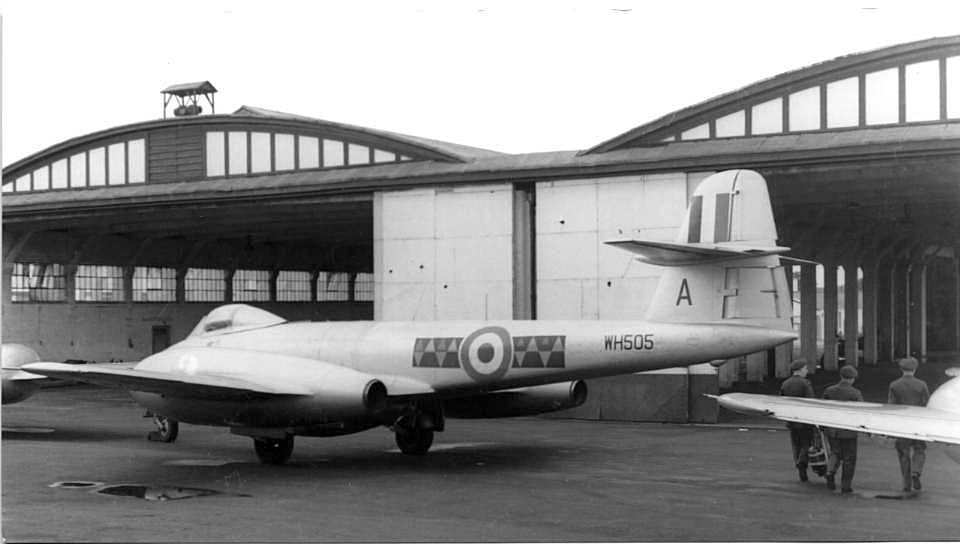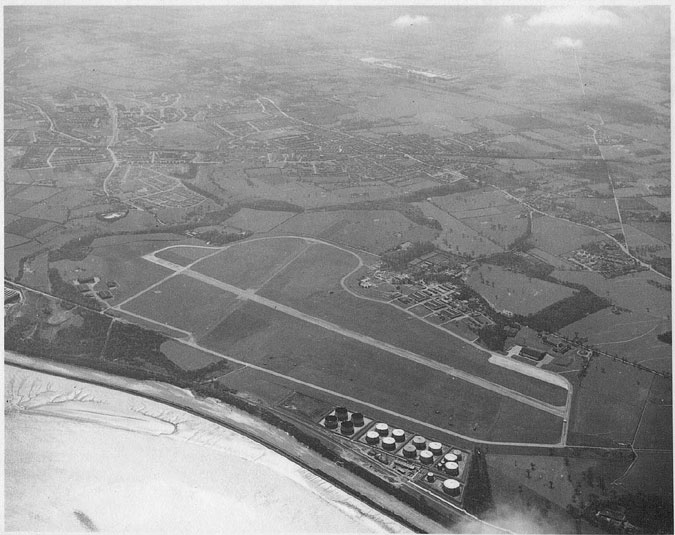 RAF Hooton Park
RAF Hooton Park
Validation date: 13 09 2014
Updated on: Never
Views: 18692
See on the interactive map:
53°18'11"N 002°56'34"W
runway: 15/33 - 6000ft/1829m - concrete
runway: 04/22 - 3400ft/1050m - concrete
Hooton Park Airfield (RAF Hooton Park) was an airfield 275 kilometer northwest of London.
It was built on a militarised horse track. When the army unit stationed here had left for battle in France, the War Department built one single and three double aircraft hangars, which were completed in 1917. The hangars had a unique latticed timber roof construction – Belfast Trusses - as originally used at the Belfast shipyards to cover large working areas providing strength at low cost. The airfield then became 4 Training Deopt Station and the Royal Flying Corps moved in to form the fighter squadrons so badly needed in France, using Sopwith Scouts, Sopwith Dolphins and Avro 504s. Some of the pilots killed in training accidents were buried in the local churchyard at nearby Eastham. Large numbers of American and Canadian pilots were also trained at Hooton Park.
The Royal Flying Corps became the Royal Air Force on 1 April 1918. At the end of that year World War I ended and Hooton Park was closed after its last 37 aircraft had moved to RAF Sealand. The following years the airfield was used as farmland, although the hangars remained on site.
In the 1920s, the site was bought by aviation enthousiast Mr. G.H. Dawson. In 1927 it was used for an airshow by the Liverpool Corporation. As a result of its success, the Liverpool and District Aeroclub was formed. For a fee, Dawson allowed the club to reside on his airfield and in twelve months it became one of the most successful in England. Soon it was one of the top-3 airfields in the north of England and for three years, the airfield served as Liverpools airport, until the Liverpool Corporation opened Speke airfield on the other bank of the Mersey. The airfield remained an important airfield though, with many private owners and small airlines using it.
In 1936, 610 (County of Chester) Sqn Auxiliary Air Force was formed at Hooton Park. Most of its pilots had taken private flying lessons to qualify. One person said, "Never have I seen so many Rolls-Royce cars in one spot at the same time", which was a good indication of the pilots' typical social status. The unit was initially a llight bomber squadron equipped with Hawker Hind and Hart bombers, and Avro Tutor trainers, but in 1939 the squadron took charge of a flight of Hurricanes that were quickly replaced by Mark 1 Spitfires. At the outbreak of the Second World War on 3 September 1939 the squadron was mobilised and sent to RAF Wittering for training.
At the same time, aircraft services provider Martin Hearn obtained a contract from the Ministry of Aircraft Production to repair large numbers of Avro Ansons and later for De Havilland Mosquito fighter-bombers. Operating as 7 Aircraft Assembly Unit, the work also included the assembly of various types of US-built aircraft that arrived by ship at the Mersey docks. Aircraft included the P-51 Mustang, P-38 Lightning and P-47 Thunderbolt fighters, A-20 Boston/Havoc and Canadian-built Handley Page Hampden bombers, and Harvard (North American T-6 Texan) trainers. Throughout the war, thousands of aircraft were assembled and repaired at Hooton. In addition, the RAF operated a flight of Coastal Command Avro Ansons, Tiger Moths and Hornet Moths on anti-submarine patrols during 1939 and 1940 and 11 Radio School and 3 General Reconnaissance School also flew from the airfield.





